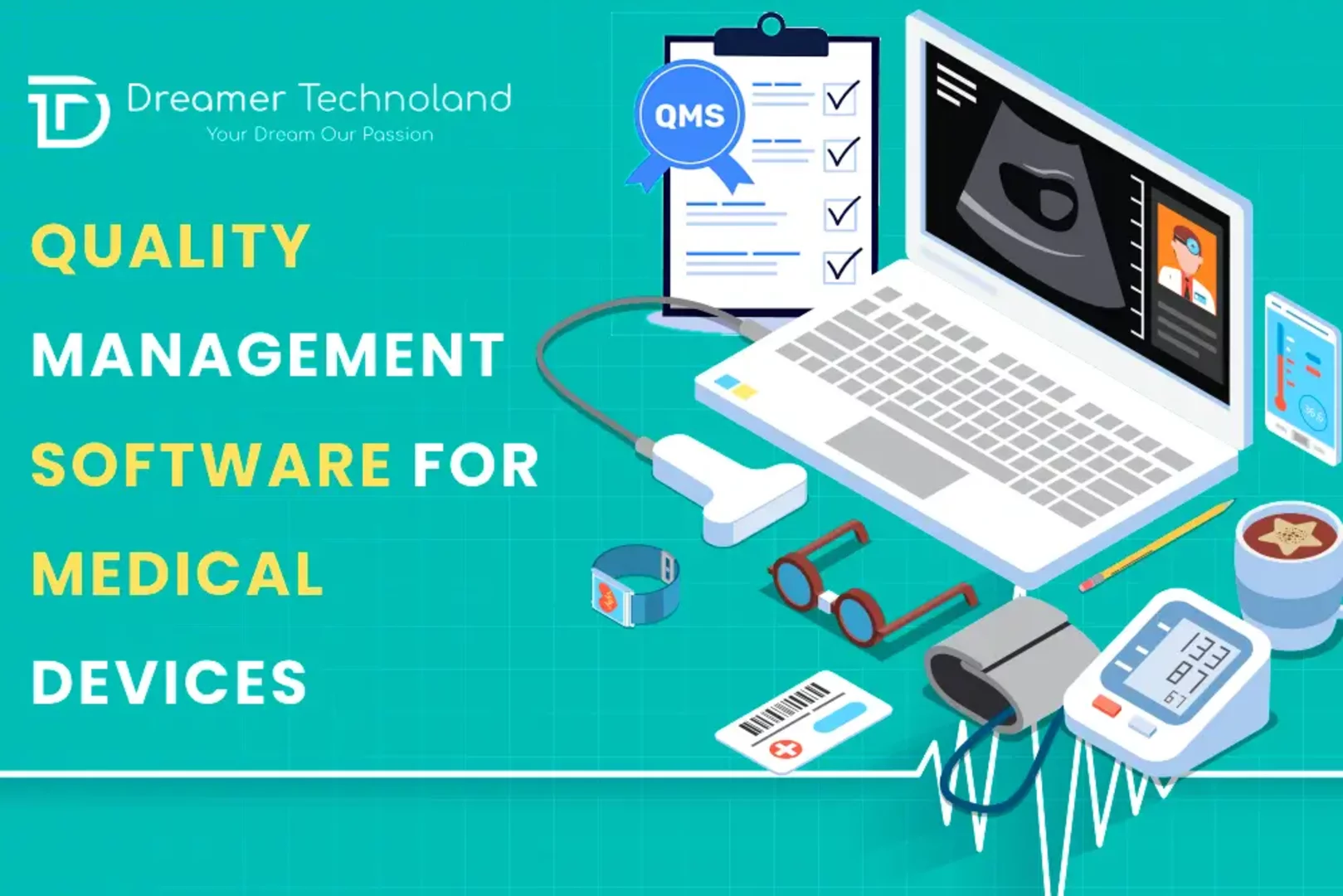dreamer technoland
Company in India
Resume
Article
What is Quality Management in the Medical Device Industry?
Quality management in the medical device industry is a critical aspect that ensures products are safe, effective, and compliant with regulatory standards. Given the potential impact of medical devices on patient health and safety, robust quality management systems (QMS) are essential. This blog will delve into the principles of quality management in this sector, the regulatory landscape, key components of QMS software for medical devices, and the importance of continuous improvement. Read till the end to understand everything associated with quality management in the medical industry and how technology is changing the traditional work practices.

Understanding Quality Management
Quality management refers to the processes and practices that organizations employ to ensure their products meet established standards of quality. In the medical device industry, quality management encompasses the entire lifecycle of a device, from design and development through production, distribution, and post-market monitoring.
Key Principles of Quality Management
The following are the key principles of quality management that ensure everything goes the way it should:
- Customer Focus: Ensuring that the needs and expectations of patients and healthcare providers are met.
- Leadership Commitment: Top management must actively support quality initiatives and foster a culture of quality.
- Engagement of People: Involving all employees in quality processes to leverage their expertise and insights.
- Process Approach: Managing activities as interconnected processes that contribute to desired outcomes.
- Continuous Improvement: Committing to ongoing enhancements in processes, products, and systems.
Regulatory Landscape of Medical Industry
The medical device industry is highly regulated to ensure safety and efficacy. Various regulatory bodies enforce strict quality standards, including:
FDA (U.S. Food and Drug Administration)
In the United States, the FDA oversees the medical device industry through regulations such as the Quality System Regulation (QSR) outlined in 21 CFR Part 820. This regulation mandates that manufacturers establish and maintain a QMS to ensure devices meet safety and effectiveness requirements.
ISO Standards
International Organization for Standardization (ISO) standards, particularly ISO 13485, provide a framework for a QMS specifically for medical devices. Compliance with ISO 13485 is often a prerequisite for entering global markets, as it demonstrates a commitment to quality management.
European Union Regulations
The EU has its own set of regulations, such as the Medical Device Regulation (MDR) and In Vitro Diagnostic Regulation (IVDR), which establish requirements for quality management systems within the European market.
Key Components of a Quality Management System
A comprehensive quality management software for medical devices includes several essential components:
Quality Policy and Objectives
A quality policy outlines the organization’s commitment to quality and sets measurable objectives aligned with customer needs and regulatory requirements.
Document Control
Effective document management ensures that all quality-related documents, such as procedures, specifications, and records, are controlled, up-to-date, and accessible.
Risk Management
Identifying and mitigating risks associated with medical devices is crucial. A robust risk management process helps manufacturers anticipate potential issues and implement preventative measures.
Design and Development Controls
Quality management during the design and development phases involves thorough planning, validation, and verification processes to ensure the device meets intended uses and performance specifications.
Supplier Management
Manufacturers must evaluate and monitor suppliers to ensure that purchased components and services meet quality standards. This includes establishing criteria for supplier selection and conducting regular audits.
Production and Process Controls
Implementing controls during production helps ensure that devices are manufactured consistently and meet predefined specifications. This includes process validation, equipment calibration, and monitoring of production activities.
Corrective and Preventive Actions (CAPA)
A CAPA system is essential for identifying non-conformances, investigating root causes, and implementing corrective actions to prevent recurrence. This process also includes preventive measures to address potential quality issues before they arise.
Training and Competence
Ensuring that employees are adequately trained and competent is vital for maintaining quality standards. Regular training programs should be implemented to keep staff updated on processes and regulatory changes.
Internal Audits and Management Reviews
Regular internal audits assess the effectiveness of the QMS, while management reviews evaluate overall performance and identify opportunities for improvement.
Importance of Continuous Improvement
Continuous improvement is a cornerstone of effective QMS for medical devices. Organizations should foster a culture that encourages innovation and seeks to enhance processes, products, and services. Techniques such as Lean and Six Sigma can be employed to identify inefficiencies and improve quality.
Benefits of Continuous Improvement
The below-shared details are the benefits of the medical device quality management software used in the industry:
- Enhanced Patient Safety: Continuous improvement initiatives lead to safer and more effective devices.
- Increased Efficiency: Streamlined processes reduce waste and improve productivity.
- Regulatory Compliance: Ongoing quality enhancements help maintain compliance with evolving regulations.
- Competitive Advantage: Companies committed to quality and improvement are better positioned to respond to market demands and build customer trust.
There are different types of software used in healthcare industry for the better treatment of patients and providing them related services.
Conclusion
Quality management in the medical device industry is a multifaceted discipline that requires a commitment to safety, compliance, and continuous improvement. By implementing a robust quality management system, manufacturers can ensure their devices meet regulatory standards and provide reliable performance for patients and healthcare providers. Ultimately, effective quality management not only protects public health but also enhances the reputation and success of the organization in a competitive market. As the industry continues to evolve, a proactive approach to quality management will be crucial for sustaining success and innovation. Rely on the QMS or hospital inventory management software development to streamline the processes at a healthcare facility.
last updated on March 24th, 2025






